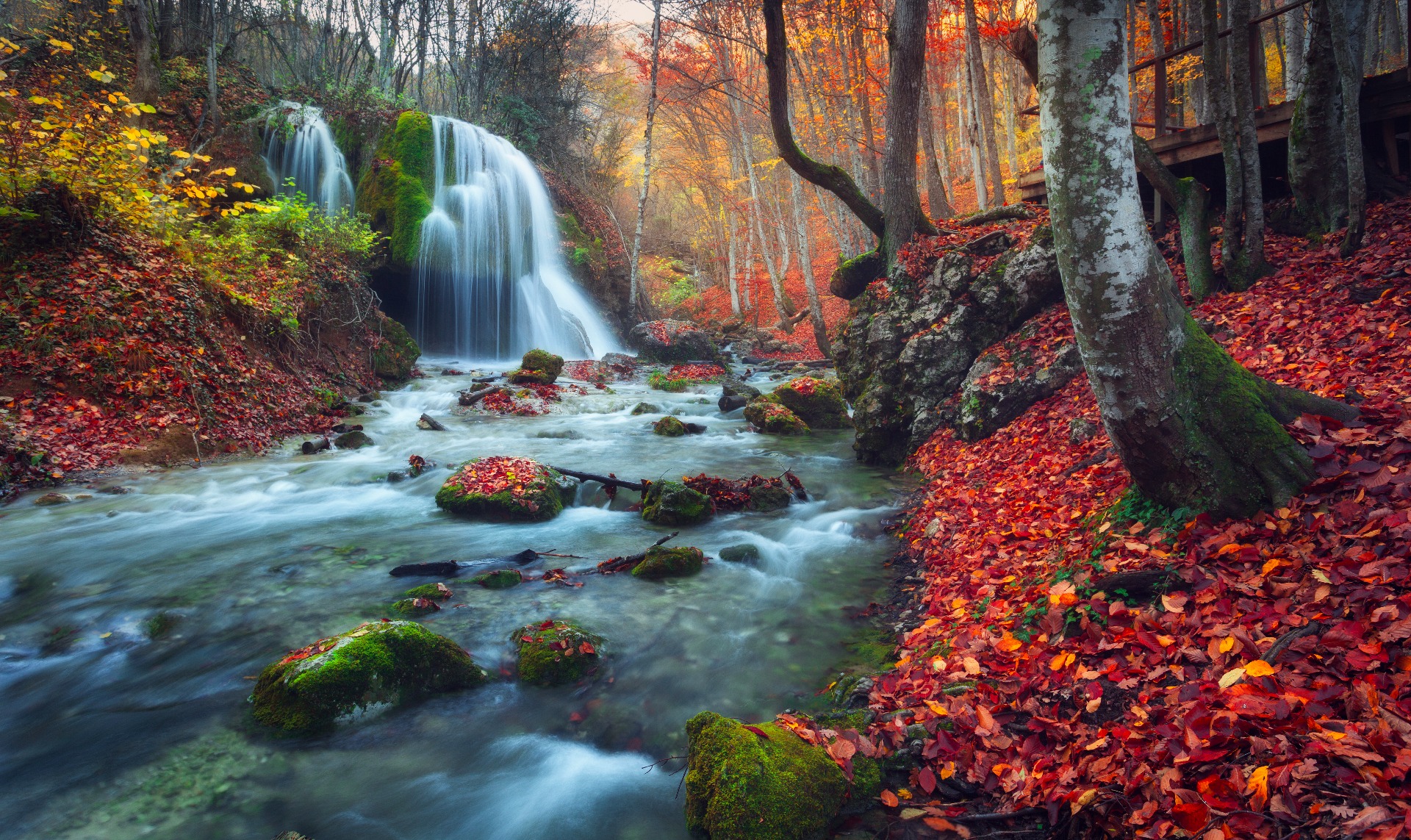
Mahabharata - Book 3 Chapter 149
Hanuman explains the ages
Bhima spoke in a gentle voice:
'No one is happier than I am, having seen my elder brother. A great favor has been done to me and I am very happy to see you. Oh please, fulfill a wish of mine. I want to see that incomparable figure of yours with which you jumped over the ocean back then. This will satisfy me and I will trust your words.
Smiling, Hanuman spoke: 'Neither you nor anyone else can see that figure of that time today. At that time, the appearances of things were different from today.
In the Krita age they had a special form,
another in the Treta and yet another in the Dwapara.
Bhima said: O tell me of the duration of the different ages, their customs, virtues, pleasures and merits (Dharma, Kama, Artha), as well as of the actions, energies, life and death therein.
Then Hanuman replied: Now, my child, the time when the one and eternal Prescribed Duty -Dharma existed is called the Krita Age. In this best of the ages
everyone possessed religious perfection, and
there was no need for religious ceremonies.
Virtue (sattva - guna) knew no diminution, and people knew no decay.
Hence the period is called Krita (perfect). But with the passage of time, this period was considered unsatisfactory.
There were no gods, enemies of the gods, gandharvas, yakshas, rakshasas or nagas then.
There was no buying or selling.
The Sama, Rig and Yayur Vedas did not exist.
There was no hard manual labor, for the necessities of life came to you when you thought of them.
The only merit was in renouncing the world.
There were no diseases and no diminishing of the senses.
There was no malice, arrogance, hypocrisy, discord, resentment, deceit, fear, misery, enmity or greed.
Therefore, the highest refuge of the Brahmins, the Supreme Brahman, was still accessible to all.
The Transcendental Lord - Narayan appeared perfectly white and was the soul of all beings.
In the Krita Age, the distinctions between Brahmins, Kshatriyas, Vaisyas and Shudras were still natural
and all remained in their respective duties.
Brahma (the spiritual nature) was their only refuge.
All customs and habits were dedicated to Brahma.
The goal of all knowledge was Brahma alone and all actions served Him only.
Thus all classes gained merit. The goal of all their meditation was the One Soul.
There was only one mantra (OM), and only one supreme law.
And though people were different, they all followed the one Veda and had one Dharma.
According to their age, they followed the four modes of life (childhood, study, household, hermithood) without any particular intention and all gained liberation.
The religion of the Krita age was to harmonize oneself with Brahman.
And so the merit of the four classes was also perfect and beyond the three modes (Sattwa - virtue, Rajas - passion and Tamas - ignorance).
Now hear from me about the Treta age.
In this period, sacrificial ceremonies were introduced,
and Virtue was reduced by a quarter.
The Transcendental Lord - Narayan took on a red color.
People practiced truthfulness and performed religious rites with devotion.
Thus the observance of vows also came into the world.
In the Treta Age, people began to devise ways and means to achieve their goals.
And so thoughts and actions became intentional.
But they never abandoned virtue.
They devoted themselves to asceticism and charity.
The four classes performed their respective duties and various rites.
In the Dwapara age, virtue decreases again by a quarter.
Narayana now appears yellow and Veda is divided into four parts.
Some people receive the four Vedas, some three or only one, and some do not even know the Rig Veda. The Shastras (spiritual scriptures) too have now been divided and the acts multiply.
People still devote themselves to asceticism and offerings, but now they are often influenced by passions. Since no one is able to experience the perfect Veda, it is divided into many parts.
The intellect has diminished and only a few are still grounded in truth.
As people fall away from truthfulness,
disease and lust spread, and plagues follow from them.
Because they suffer from these, people repent.
Some sacrifice because they desire the good things of life,
and others to gain heaven.
During Dwapara, people degenerate visibly because their piety diminishes.
Now, O son of Kunti, in the Kali (the current) age, only a quarter of virtue remains This is the iron age, and Narayana is (blue) dark (Krishna).
Vedas, virtue, sacrifices and vows become impoverished.
The Itis rule (six things unfavorable to grain: Rain, drought, rats, locusts, birds and hostile neighboring kings in excess), besides disease and lassitude, wrath and other deformities, natural calamities, agony and fear of scarcity.
As the ages pass, so does virtue. And when virtue passes, creatures degenerate. Their appearance changes. The sacrificial rites are reversed over the ages.
Even those who live over several ages (like me) go along with the changes. And as for your curiosity to see me, I ask you: Why would a wise person desire something ephemeral?
Well, O you with the long arms, I have told you about the ages because you asked me. May good things happen to you. Turn back now.
